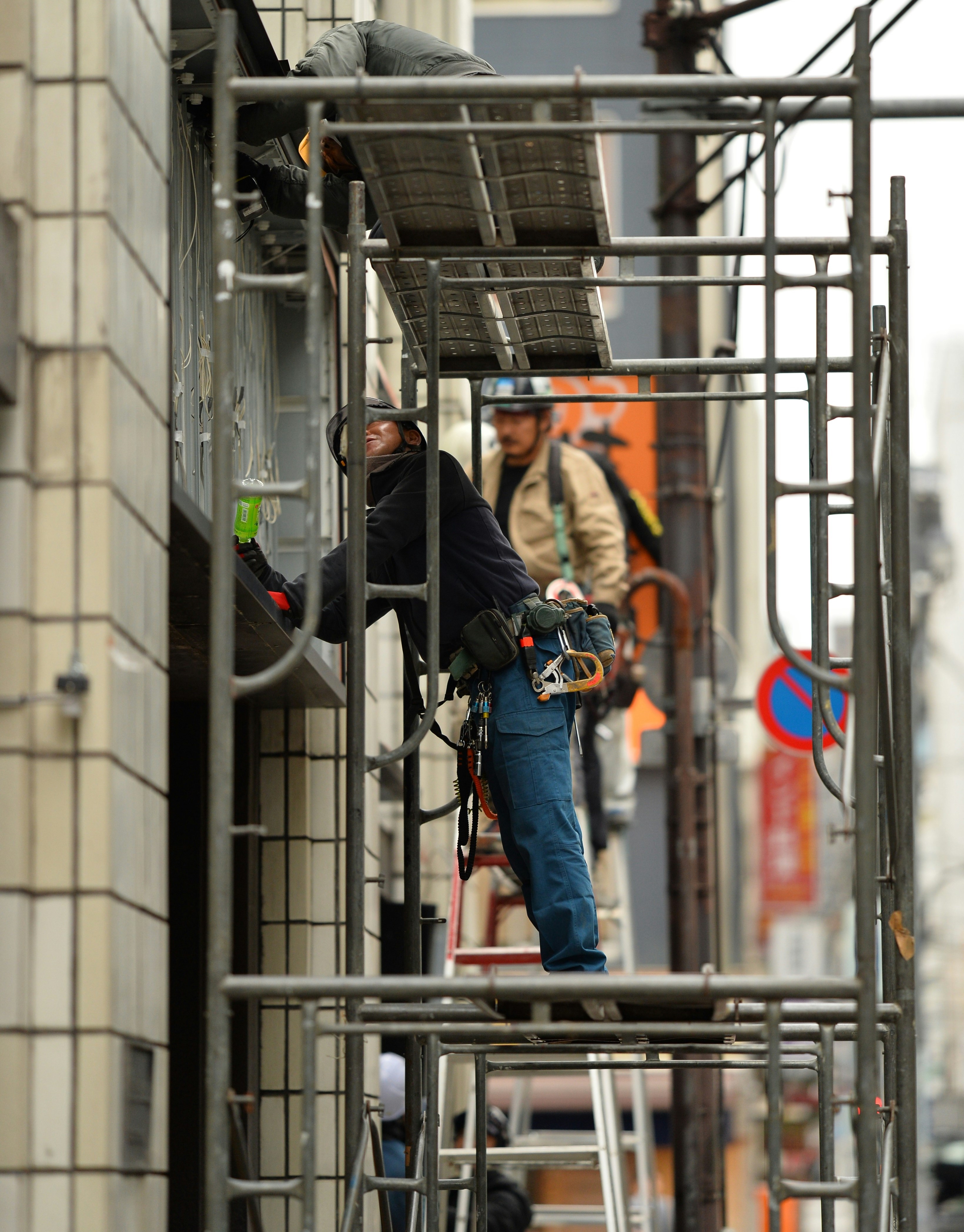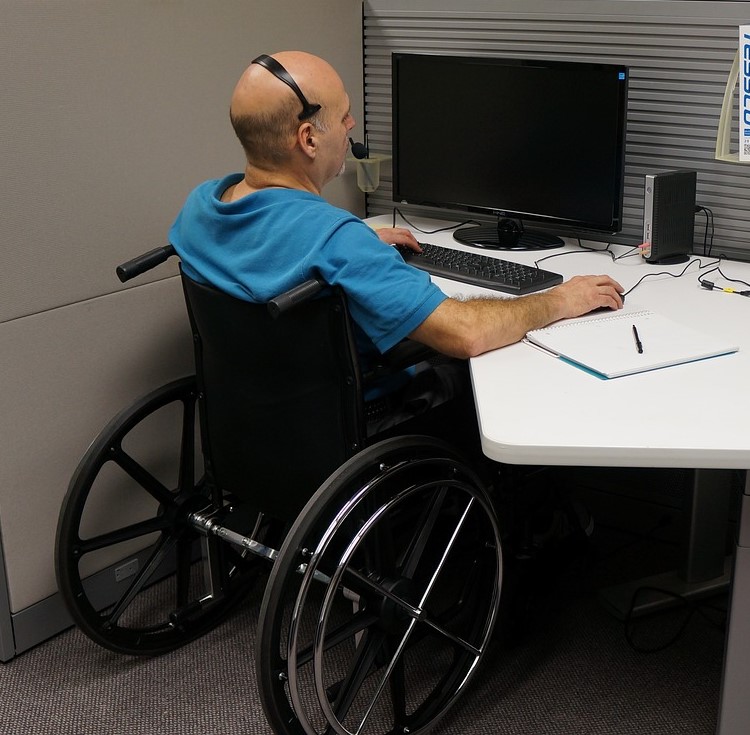Men and mental health in the workplace – taking positive steps
When thinking about men’s mental health, it is clear there are significant issues that need to be addressed.
In 2023, 80% of suicides in England were men, with those aged 44-49 being most likely to die by suicide at a rate of 25.3 per 100,000.
In Wales, the highest suicide rate was found among males aged 30-34 years (37.6 per 100,000).

Charlie Waller Workplace trainer, Andy Caress
MIND’s 2019 report, ‘Get it off your chest: Men’s mental health 10 years on’, identified that 43 per cent of men surveyed admitted to regularly feeling worried or low. Almost two-thirds of those engaged in hazardous drinking are men, and men are more likely to drink alone.
New fathers experiencing perinatal mental health problems are 47 times more likely to die by suicide than at any other time in their lives.
Men in construction, an industry that is still male-dominated, are 3.7 times more likely to die by suicide than the national average.
Figures from the 2024 Workplace Health Report identify that over one in three men report unhelpful stress at work.

Creating a positive working environment
These statistics can make the situation sound very bleak and it needs to be taken extremely seriously. However, the good news is that there are plenty of businesses and other workplaces trying to create a positive environment for the mental wellbeing of employees of all genders.
As observed in the Harvard Business Review, “while there are many personal factors that can influence someone’s mental state, the workplace can be an incredibly triggering environment”.
The average UK employee will spend just under 90,000 hours at work over the course of their life, which accounts for a third of one’s working-age existence.
This Men’s Health Month, we need to look at the environment in which all employees, including men, are expected to grow. To thrive and to be happy, and to be able to seek support. In the famous words often attributed to Archbishop Desmond Tutu, “There comes a point where we need to stop just pulling people out of the river. We need to go upstream and find out why they’re falling in”.
Caring for employees
As well as putting in place systems to provide care for those who are struggling with their mental health, workplaces need to consider the environment they create and promote. Employers have a legal 'duty of care': they must do all they reasonably can to support their employees' health, safety and wellbeing. It includes:
- making sure the working environment is safe
- protecting staff from discrimination and bullying
- carrying out risk assessments and taking action
- helping prevent work-related stress

Credit: The Gender Spectrum Collection
Helping men thrive at work – four key steps
Employers must treat mental and physical health as equally important.
Employers must treat mental and physical health as equally important.
In light of this, Mind have produced the 'Mental Health at Work Commitment' based on 'Thriving at work: the Stevenson/Farmer review of mental health and employers', produced in 2017.
The commitment includes statements encouraging workplaces to “Produce, implement and communicate a mental health at work plan, drawing from best practice and representing the views of employees across the organisation, specifically exploring feedback from people with mental health problems”, and to “Create opportunities for employees to feed back when work design, culture and conditions are driving poor mental health”.
Whilst it is unrealistic and unhelpful to consider men in the workplace as a homogenous group, there are positive steps that can be taken to help create a more mentally healthy workplace:
1. Setting clear and realistic goals
When performance expectations are unrealistic, it is common for men in the workplace to experience feelings of inadequacy and a sense of failure.
A study by Telus this year found that 44% of workers feel physically and/or emotionally exhausted by the end of the working day.

It is well-established that currently men are less likely to disclose that they are struggling, with 40% of those surveyed by the Priory Group saying they had never spoken to anyone. When asked why, 40% of these gave the reason that 'I’ve learnt to deal with it', with other reasons including:
'I don’t wish to be a burden to anyone' (36%)
‘I’m too embarrassed’ (29%)
‘There’s negative stigma around this type of thing’ (20%)
‘I don’t want to admit I need support’ (17%)
‘I don’t want to appear weak’ (16%)
With this in mind, it is beholden on workplaces to ensure that the performance standards they impose are realistic and clear. Moreover, it has been shown that ‘men will focus on protecting their performance, even at the expense of their health, by persevering with their work and extra-role behaviors [sic] despite their ill-health’.
By not celebrating presenteeism, and by advocating for a culture that promotes a healthy work-life balance, workplaces can help mitigate against this.

2. Recognition and appreciation
Effort-reward imbalance theory posits that “failed reciprocity between high efforts spent at work and low rewards received in turn elicits strong negative emotions and stress reactions with adverse long-term effects on health”.
This being the case, providing recognition for an individual’s efforts is important. However, there are limitations, as pointed out by Mike Robbins in the Harvard Business Review:
“First, it’s performance-based, so it’s conditional. Second, it’s based on the past, so it’s about what people have already done. Third, it’s scarce”. Workplaces can play an important role in helping men to identify that their self-worth is not solely tied to their work achievements.
When an individual is only praised for their work, and for going above and beyond what is expected of them, workplaces reinforce the idea that one’s value lies in what they do. Rather, workplaces can also ensure that they are creating a culture of appreciation – this, as Robbins says, “is about acknowledging a person’s inherent value. The point isn’t their accomplishments. It’s their worth as a colleague and a human being”.
3. Peer-led schemes to support men's mental health
Peer support has been defined as “a system of giving and receiving help founded on key principles of respect, shared responsibility, and mutual agreement of what is helpful. It is about truly understanding another person’s situation through the shared experience.”
For many men, peer support is beneficial because they do not experience it as seeking help in an overt way.

Rather it is about finding a safe space in which they feel able to talk. Many men find it easier to give and receive support whilst engaged in an activity.
Indeed, such schemes should not only be offered for men who are already struggling. Creating a shared space for men to offer, as well as receive, support and guidance, as well as engage in shared activities together, can act as a powerful bulwark against isolation and stress. In the words of an Australian man who was interviewed for a study in 2022:
‘In getting help, I am helping others. Maybe men aren’t as good at getting help as they should be, but blokes really like giving help, offering help, being useful. So you train people to look after their mates rather than train them to look out for themselves, but in the process they learn how to look out for themselves.’
Workplaces can play a huge role in supporting men’s mental health, by creating a culture and environment that prioritises the wellbeing of everyone.
4. Identity, work and self-worth
Work remains a key aspect of many men’s identity and self-worth. This is not negative or positive, but simply an observation. Workplaces can play a huge role in supporting men’s mental health, by creating a culture and environment that prioritises the wellbeing of everyone.
This is an ideal opportunity to reflect honestly about your workplace, and to ensure that men’s voices and views are valued and respected throughout this process. Charlie Waller Workplace can support, by offering practical, evidence-based consultancy, training and support.
Andy Caress is a mental health trainer for Charlie Waller Workplace and the Charlie Waller Trust.
References
Samaritans (2024) Latest Suicide Data. Available at https://www.samaritans.org/about-samaritans/research-policy/suicide-facts-and-figures/latest-suicide-data/
MIND (2019) Get it off your chest: Men’s mental health 10 years on. Available at https://www.mind.org.uk/media/6771/get-it-off-your-chest_a4_final.pdf
Drink Aware (2024) Alcohol and men. Available at https://www.drinkaware.co.uk/facts/health-effects-of-alcohol/general-health-effects/alcohol-and-men
Papyrus (2023) International Father’s Mental Health Day: Q and A with Mark Williams. Available at https://www.papyrus-uk.org/ifmhd23/#:~:text=The%20fact%20that%20the%20prevalence,other%20time%20in%20their%20lives.
Mates in Mind (2023) Mental health in UK construction: The statistics. Available at https://www.matesinmind.org/news/mental-health-in-uk-construction-the-statistics
Champion Health (2024) The Workplace Health Report. Available at https://championhealth.co.uk/wp-content/uploads/workplace-health-report-2024.pdf
Hanh (1992) Peace is every step: The Path of mindfulness in everyday life, Bantam
Harvard Business Review (2022) We need to talk about men’s mental health at work. Available at https://hbr.org/2022/11/we-need-to-talk-about-mens-mental-health-at-work
Martin, C. (2019) How much time do we spend at work? Available at https://blog.moderngov.com/2019/02/how-much-time-do-we-spend-at-work
Tutu, D. Available at https://www.goodreads.com/quotes/954454-there-comes-a-point-where-we-need-to-stop-just
ACAS (2024) Supporting mental health at work: Mental health and the law. Available at https://www.acas.org.uk/supporting-mental-health-workplace
MIND (2024) The Mental Health at Work Commitment. Available at https://www.mind.org.uk/news-campaigns/campaigns/mental-health-at-work-commitment/
UK Government (2017) Thriving at work: The Stevenson / Farmer review of mental health and employers. Available at https://assets.publishing.service.gov.uk/media/5a82180e40f0b6230269acdb/thriving-at-work-stevenson-farmer-review.pdf
MIND (2024) Introducing the six standards. Available at https://www.mind.org.uk/news-campaigns/campaigns/mental-health-at-work-commitment/the-6-standards/
Fusion (2023) Men’s mental health in the workplace. Available at https://www.fusionoh.com/mens-mental-health-in-the-workplace/#:~:text=Men%20are%20often%20faced%20with,stress%2C%20anxiety%2C%20and%20burnout.
Telus (2024) Telus mental health index. Available at https://go.telushealth.com/hubfs/MHI%202024/UK_MHI_April_Final.pdf
Priory Group (2024) Men's mental health: 40% of men won’t talk to anyone about their mental health. Available at https://www.priorygroup.com/blog/40-of-men-wont-talk-to-anyone-about-their-mental-health
Luksyte, A. et al. (2022) Gender differences in the relationship between presenteeism and extra-role behaviors. Journal of Organizational Behaviour 44(6). Available at https://onlinelibrary.wiley.com/doi/full/10.1002/job.2651
Siegrist, J. (2017) The effort-reward imbalance model, The Handbook of Stress and Health: A Guide to Research and Practice, First Edition. Available at https://onlinelibrary.wiley.com/doi/10.1002/9781118993811.ch2#:~:text=It%20posits%20that%20failed%20reciprocity,security%2C%20and%20esteem%2C%20recognition.
Harvard Business Review (2019) Why employees need both recognition and appreciation. Available at https://hbr.org/2019/11/why-employees-need-both-recognition-and-appreciation




